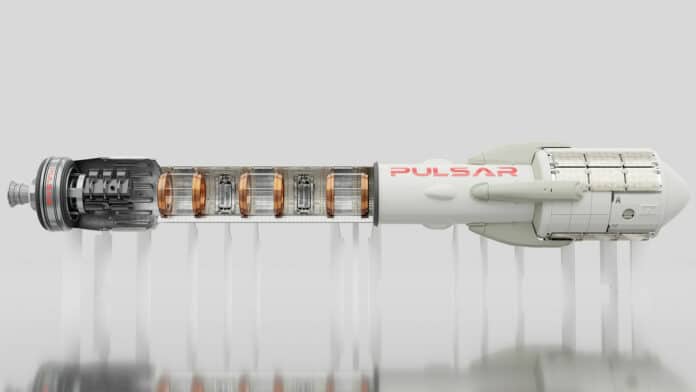Space propulsion company Pulsar Fusion has started construction on what it claims is the largest practical nuclear fusion rocket engine ever built. Its exhaust speeds could exceed 500,000 miles per hour.
The groundbreaking nuclear fusion propulsion tech could cut the transit time to Mars, Jupiter, and Saturn and even explore beyond the solar system. For example, there is interest in the potential of life on Titan, one of Saturn’s moons, and with a Pulsar Fusion’s nuclear fusion-powered propulsion system, one can make the trip in two years versus decades.
Also, the company says, this technology can potentially propel a spacecraft with a mass of about 1,000 kg (2,200 lb) to Pluto in 4 years.
“Humanity has a huge need for faster propulsion in our growing space economy, and fusion offers 1,000 times the power of the conventional ion thrusters currently used in orbit,” said Richard Dinan, founder and CEO of Pulsar Fusion. “In short, if humans can achieve fusion for energy, then fusion propulsion in space is inevitable. We believe that fusion propulsion will be demonstrated in space decades before we can harness fusion for energy on Earth.”
Pulsar Fusion’s new direct fusion drive (DFD) rocket engine could provide both thrust and electrical power for spaceships. The rocket engine will hopefully reach several hundred million degrees, creating temperatures hotter than the Sun when it gets to work. DFD drives are ideal for space travel since the energy produced is clean, virtually limitless, and the drive is relatively compact.
The company is working on the engine in a test facility in Bletchley, England. DFD drives can produce thrust without the need for an intermediary, electricity-producing step. In a DFD system, the fusion reactor generates energy, creating a plasma of electrically charged particles. Those energetic particles are converted to thrust using a rotating magnetic field.
However, confining the super-hot fusion plasma with an electromagnetic field is a huge challenge. To better understand the behavior of complex plasma, the company is teaming up with Princeton Satellite Systems (PSS), an aerospace research and development company, to apply artificial intelligence and machine learning to study data from the Princeton field-reverse configuration (PFRC-2) reactor. The simulations will assess the performance of nuclear fusion plasma for propulsion as it exits a rocket engine emitting exhaust particles at hundreds of kilometers per second (km/sec).
While this is hypothetical for now, the technology opens unprecedented possibilities to explore the solar system in a limited amount of time and with a very high payload to propellant masses ratio.
“The Direct Fusion Drive is really a game-changing technology enabling us to reach deep space destinations much faster and with vast amounts of power,” said Stephanie Thomas, Vice President of PSS. “NASA is interested in a variety of deep space destinations such as getting to Jupiter in one year, Saturn in two years, Pluto in four to five years. A single, one-megawatt DFD engine can handle any of those missions. It’s a dramatically different way to operate deep space missions that will save time and money and enable us to do more science when we get there.”
Pulsar has now proceeded to phase 3, the manufacture of the initial test unit. Static tests are to begin in 2024, followed by an In-Orbit Demonstration (IOD) of the technology in 2027.
